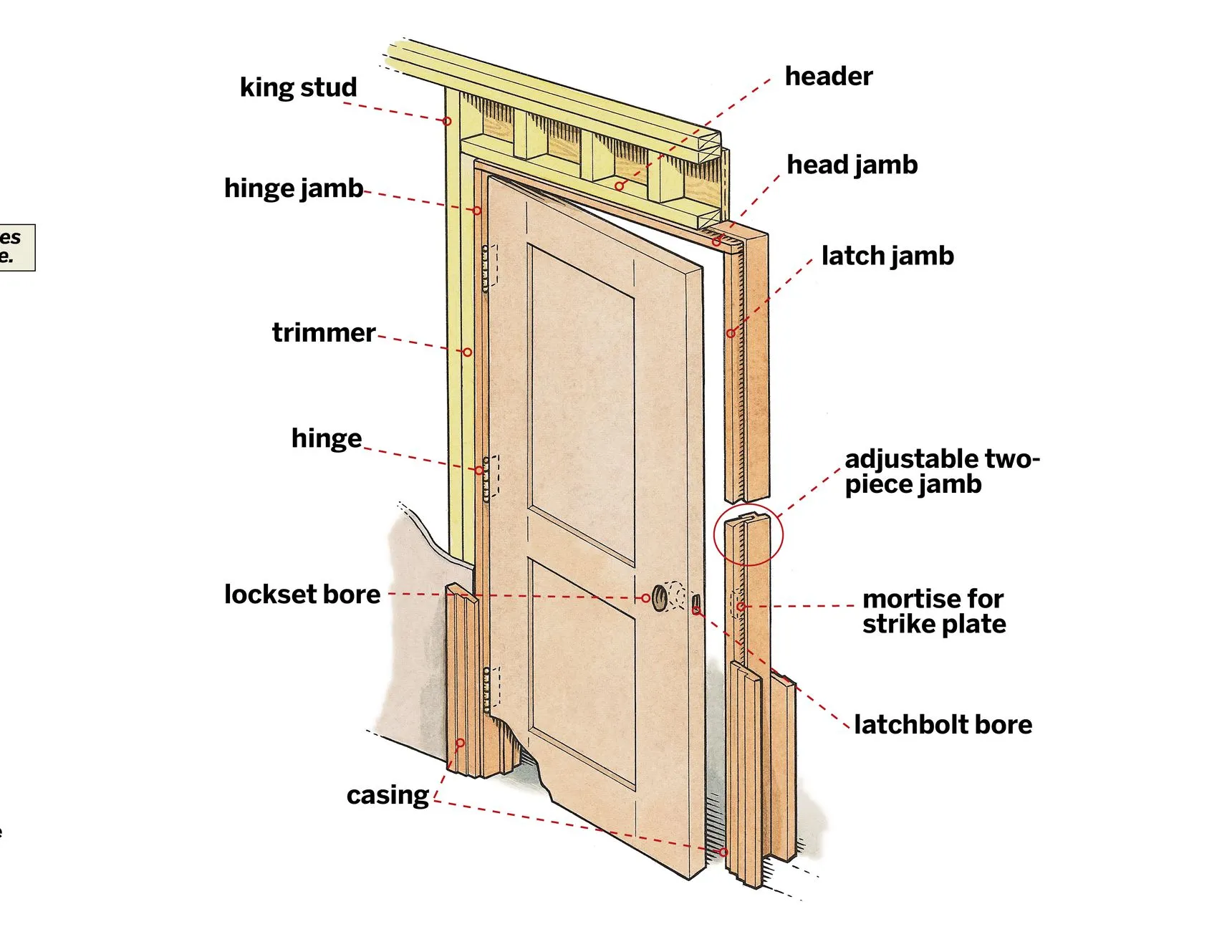Step into the intriguing realm of reveal construction, a technique that transforms buildings from ordinary to extraordinary. This architectural element adds depth and visual allure, unveiling the secrets that make every detail a captivating masterpiece. From the types of reveals to the techniques and materials used, this guide will take you on a journey into the artistry of reveal construction, leaving you mesmerized by its transformative power.
What is a Reveal in Construction?
In the world of architecture, it’s often the subtle details that make the biggest impact. Take reveals, for instance. These understated recesses, strategically incorporated into a building’s design, add a layer of sophistication that elevates the entire structure. Imagine a plain white wall – simple, expected, and perhaps a little boring. Now, envision that same wall with a carefully placed reveal around the windows and doors. Suddenly, it pops! The subtle shadow lines created by the reveal add depth and dimension, making the wall come alive with visual interest.
Reveals come in various forms, each serving a specific purpose:
- Applied Reveals: These are moldings or strips added onto a surface to create the look of a reveal.
- Flush Reveals: When two surfaces meet at the same level, creating a clean, uninterrupted line, you have a flush reveal.
- Recessed Reveals: These reveals are grooves or indentations carved into the surface of a material.
The beauty of reveals is that they’re incredibly versatile. Architects use them to define the edges of doors and windows, subtly enhance the proportions of a building, and even discreetly conceal imperfections in materials. But reveals are more than just a pretty face; they also offer practical benefits. For example, they can help direct water away from vulnerable areas, improving a building’s weather resistance.
How Do Reveals Enhance Building Aesthetics?
Reveals are the unsung heroes of design, adding a touch of magic to architectural elements that might otherwise go unnoticed. It’s about more than just looks; reveals bring a whole new level of depth, intrigue, and sophistication to the table.
Here’s how reveals elevate building aesthetics:
- Visual Interest and Depth: Imagine sunlight playing across a building’s facade, casting intricate shadows from carefully placed reveals. These shadow lines create a captivating interplay of light and dark, adding visual drama and making the building come alive.
- Highlighting Architectural Features: Architects use reveals to draw your eye to specific elements, such as windows, doors, or even structural columns. By creating a subtle frame around these features, reveals give them prominence and emphasis, adding a layer of sophistication to the overall design.
- Manipulating Light and Shadow: Just as a painter uses light and shadow to create depth and dimension on canvas, architects use reveals to sculpt light within a space. By adjusting the depth, width, and placement of reveals, they can control how natural light enters a room, highlighting key features or setting a specific mood.
- Creating a Sense of Balance and Proportion: Reveals can subtly adjust the perceived proportions of a building or its elements. A well-placed reveal can make a tall building appear more grounded, or a small room feel more spacious, all while adding a touch of elegance and refinement.
Different Types of Reveals and Their Applications
Reveals are like spices in a chef’s pantry; each type offers a unique flavor that can enhance and elevate the overall design. Let’s explore some of the most common types of reveals and their applications:
1. Wall Reveals:
- What They Do: Wall reveals are like subtle brushstrokes on a canvas, adding texture, depth, and visual interest to otherwise plain walls.
- Where to Use Them: Incorporate wall reveals on interior and exterior walls, around fireplaces, or to define columns.
2. Ceiling Reveals:
- What They Do: Ceiling reveals add a touch of grandeur and elegance to ceilings, creating a sense of height and spaciousness. They can also help define different areas within a large room.
- Where to Use Them: Consider incorporating ceiling reveals in entryways, living rooms, dining rooms, or to highlight architectural details like moldings or beams.
3. Door and Window Reveals:
- What They Do: Door and window reveals make these openings pop, creating a visually appealing frame that draws the eye and adds a touch of sophistication.
- Where to Use Them: Incorporate these reveals around interior and exterior doors and windows to enhance their visual impact and complement the overall design aesthetic.
4. Expansion Joint Reveals:
- What They Do: These reveals, also known as control joints, are essential for managing the natural movement of building materials due to temperature changes, moisture, and settling.
- Where to Use Them: Expansion joint reveals are often found in walls, floors, ceilings, and roofs.
Materials Used for Reveal Construction:
The choice of materials for reveals depends on the desired aesthetic, durability requirements, and the overall design style.
- Wood: Wood reveals bring warmth, character, and a timeless appeal to both traditional and contemporary designs.
- Metal: Metal reveals, often crafted from aluminum, stainless steel, or bronze, create a sleek, modern look. They are durable, weather-resistant, and can be anodized or powder-coated to achieve various finishes.
- Stone: Stone reveals, whether natural or engineered, add a touch of luxury and permanence to a design. They are incredibly durable and offer a timeless elegance that complements a wide range of architectural styles.
The Significance of Reveals in Architecture:
Reveals are more than just decorative elements; they are integral to a building’s structural integrity, durability, and overall performance.
- Controlling Moisture: Reveals can help prevent water damage by providing a channel for water to drain away from vulnerable areas.
- Allowing for Movement: Expansion joint reveals accommodate the natural expansion and contraction of building materials, preventing cracks and structural damage.
Curious about the history of chocks beams? Explore our comprehensive resource on construction company bios and profiles for inspiration. Construction materials, the cornerstone of any building project, are also covered in depth.
- How to Get Motor Oil Out of Clothes: Proven Methods & Step-by-Step Guide - April 25, 2025
- How to Get Mothball Smell Out of Clothes: A Complete Guide - April 25, 2025
- How to Get Highlighter Out of Clothes: Easy & Effective Stain Removal Guide - April 25, 2025










